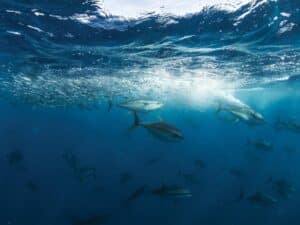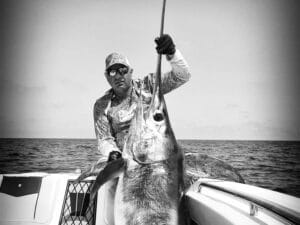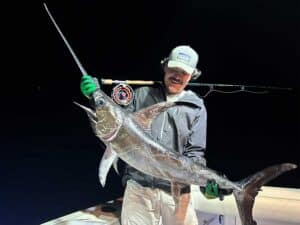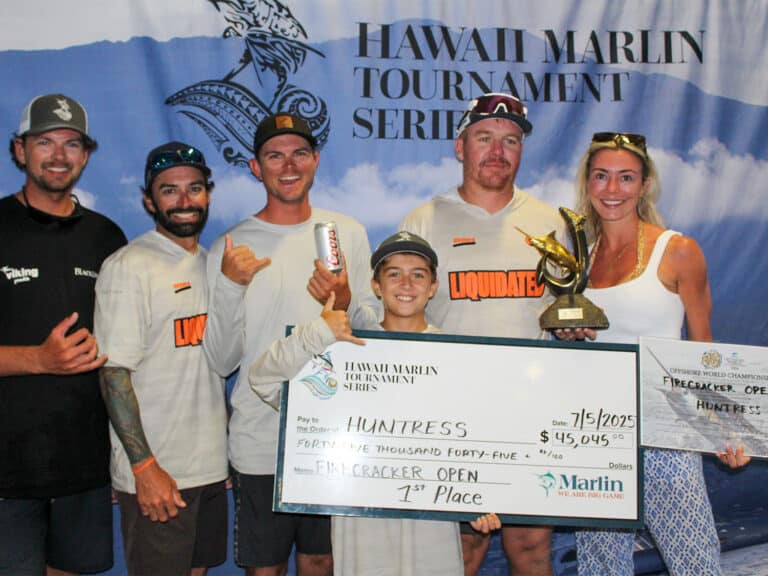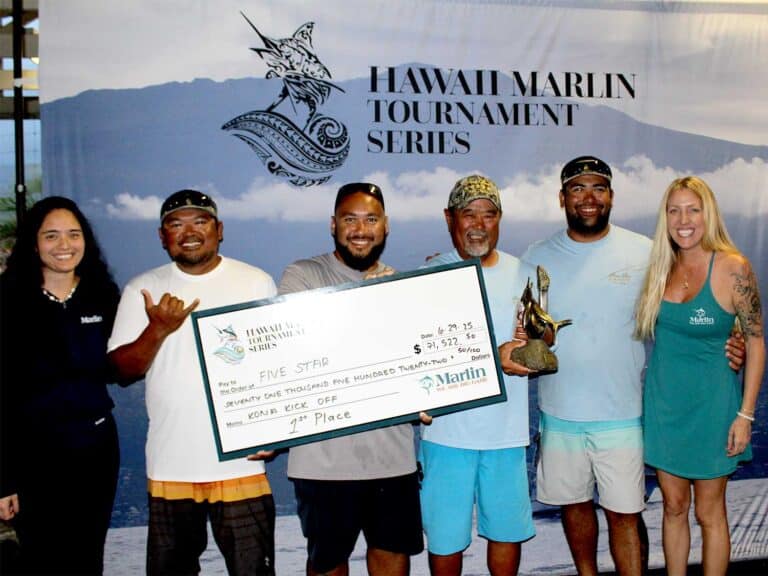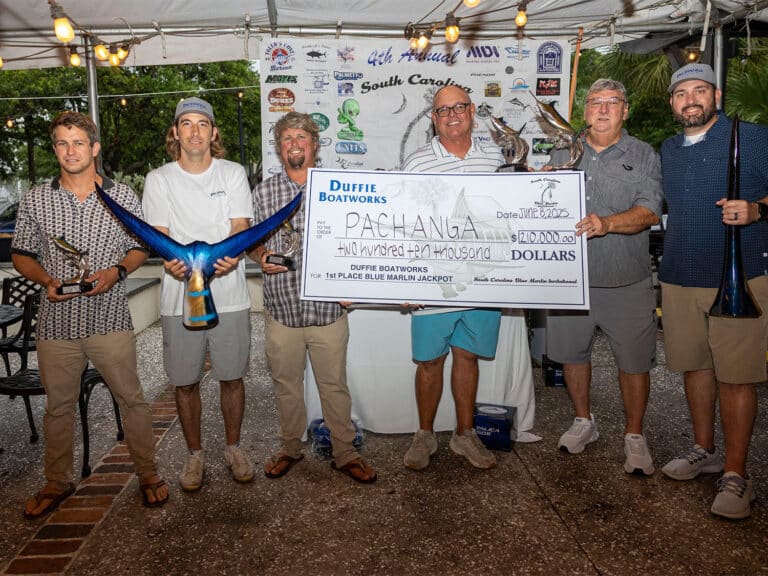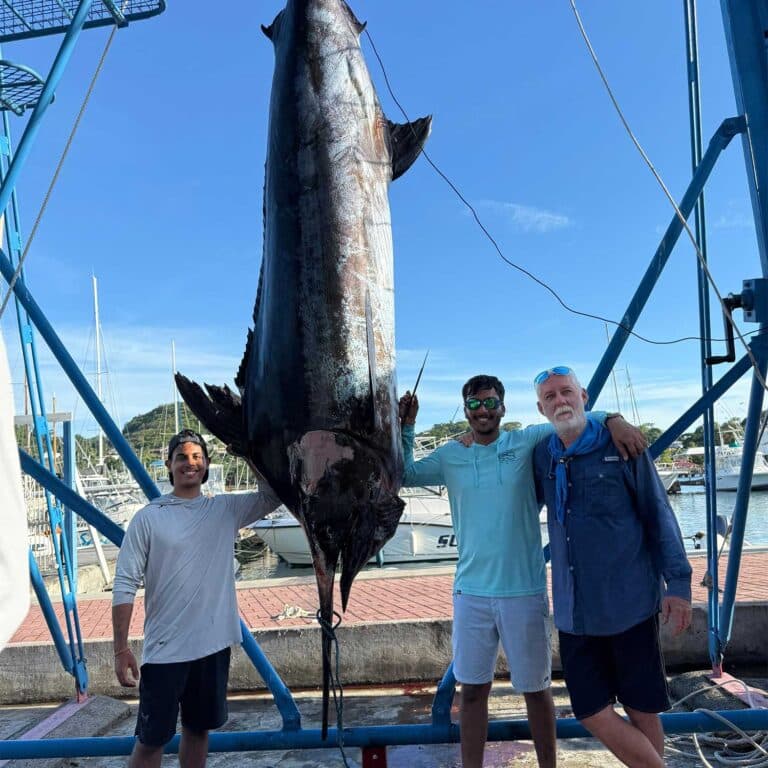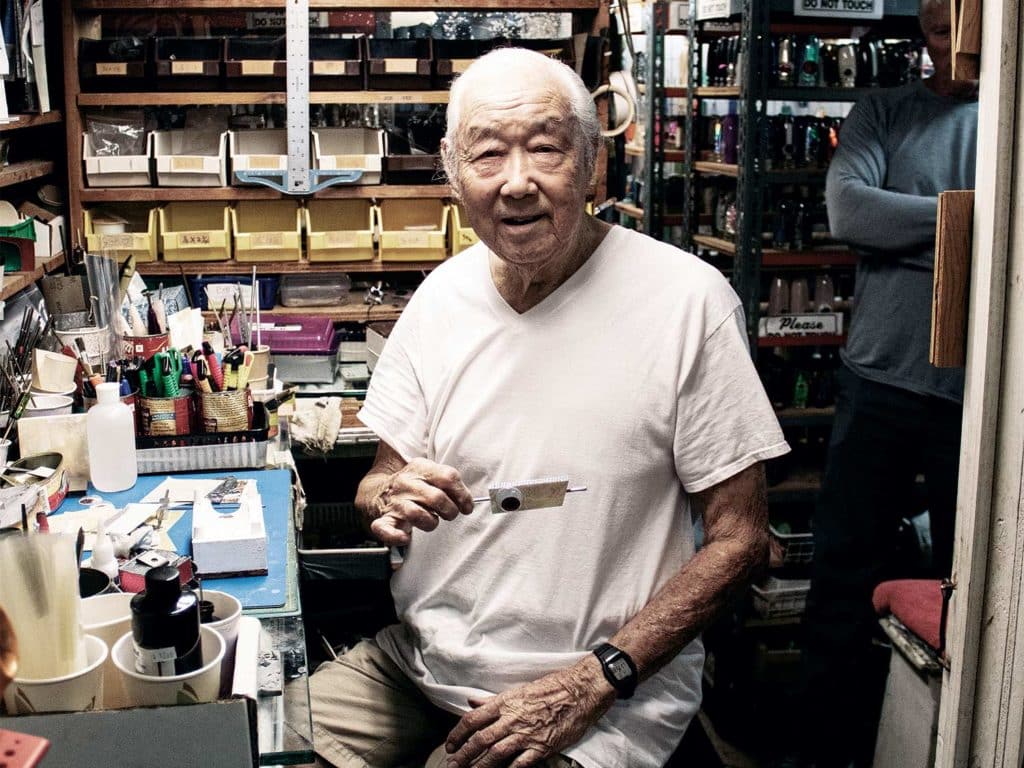
In the multibillion-dollar sport-fishing industry, driven by technology and the latest in innovation, some of the coveted tools of the marlin trade are produced in a dusty basement workshop in Hawaii, just as they have been since 1960.
The Super Plunger, Crackerjack, Apollo, Evil, 24/7 and 501—among others—are some of the most famous marlin lures of all time, accounting for several world-record billfish and numerous thousand-pound marlin. They remain among the most-sought-after lures in the game, whether you’re a collector or captain.
And yet, what started as Joey’s Custom Lures, the same Joe Yee lure you buy today is made in essentially the same fashion, and by the same now-weathered hands, as the first lures that Yee turned out 60 years ago in his home workshop in Honolulu.
At 92, Yee is still going strong, crafting his lures by hand with the help of his grandson, Steven Kegley, in his basement. He is still on the water on a regular basis, roaming the world’s hottest fishing locales and fishing the waters off Kona, where he developed and honed his wares. Yee is already a legend, with more chapters yet to be written.
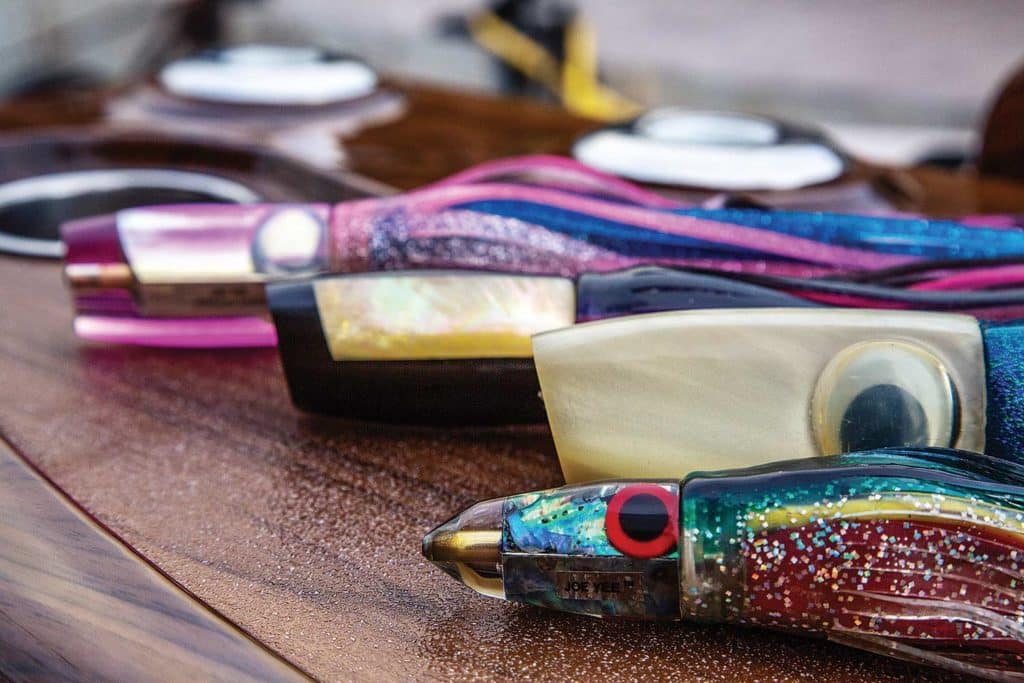
Part-Time Tinkering to Full-Time Designer
Like most of his friends, Yee grew up surfing. He was always hanging around the beach, chasing waves, and giving surf lessons to the Pan Am stewardesses on Waikiki Beach. As a teenager, his craftsman’s hands found their groove shaping fiberglass surfboards for the likes of local legend Duke Kahanamoku—Hawaii’s two-time Olympic gold-medal-winning swimmer and father of modern surfing. The Duke was a close friend of Joe’s; the two used to surf and fish together often.
In the postwar years, Yee went to work as an aircraft mechanic. He was always working on engines and was an avid racing fan as well. One day, while tinkering with some old spark-plug parts, it occurred to him that certain pieces could be used to make a mold, and that pouring the resins that surfboard shapers used to repair their boards would create a hard lure head that could be shaped and polished to cut through the water just so. Henry Chee was already producing resin lures, but Yee was more analytical and an artisan. He didn’t do it first, but he knew he could do it better.
Watch: Golfito, Costa Rica’s blue marlin fishery is red-hot.
In 1960, a year after Hawaii became the 50th state, the first Joe Yee resin-headed lure splashed into the water. The first models worked well, but he still knew he could improve them, which he did. As his lures started catching fish in the marlin-rich waters of the Hawaiian Islands, Yee’s reputation as a lure-maker grew.
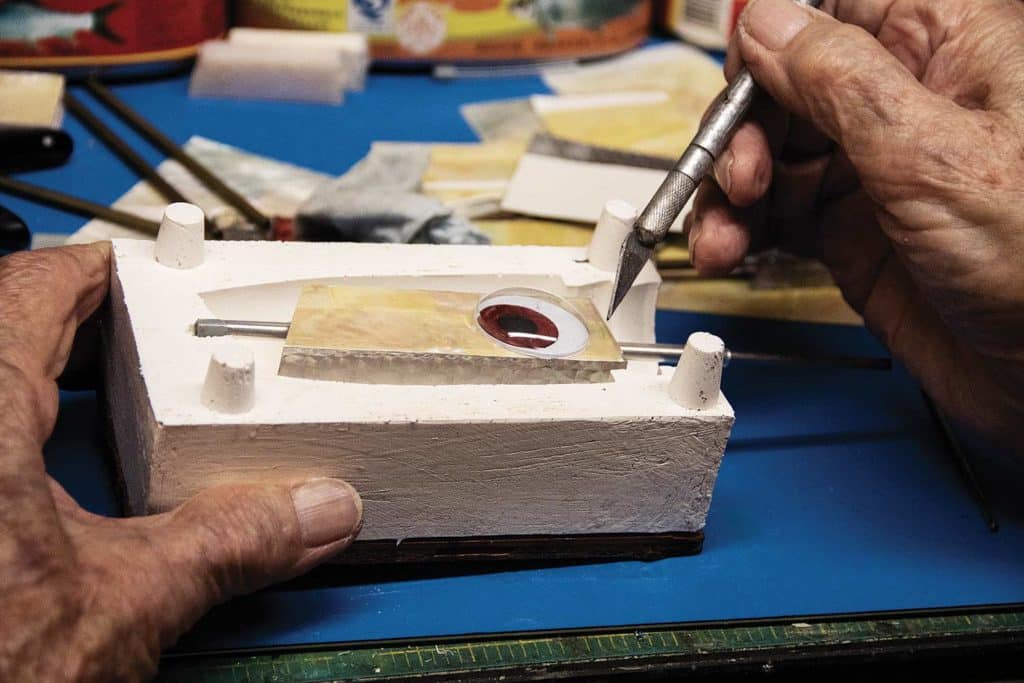
Spreading the Word
Yee would set up a display table during registration for the Hawaiian International Billfish Tournament and sell his lures to traveling anglers from all around the world; his brand spread across the oceans as visiting anglers took their new Yees home, where they would often out-fish those of local lure-makers. Hawaii was the blue marlin capital of the world, and Joe Yee lures were the ones everyone wanted.
Yee started fishing in the first HIBT tournaments with Hawaii state senator Kenny Brown. Kona was a tiny fishing village, but everyone knew Yee, and his lures gained legendary status very quickly with early successes right off the bat. Rocky Franich and his father, Marty, were traveling marlin anglers who owned a Lincoln automobile dealership in California; Yee used to purchase black Lincoln Continentals from the Franiches, which they shipped to Hawaii on the Matson Lines. Rocky says Yee parked wherever he wanted since he was friends with the only policeman on that side of the island, as well as the chief of police. Yee was friends with legendary Hawaiian entertainer Don Ho, among many others. He also started traveling to Cabo San Lucas, Tahiti, Guam and the US Gulf Coast tournaments, selling his lures and fishing with famous anglers and captains.
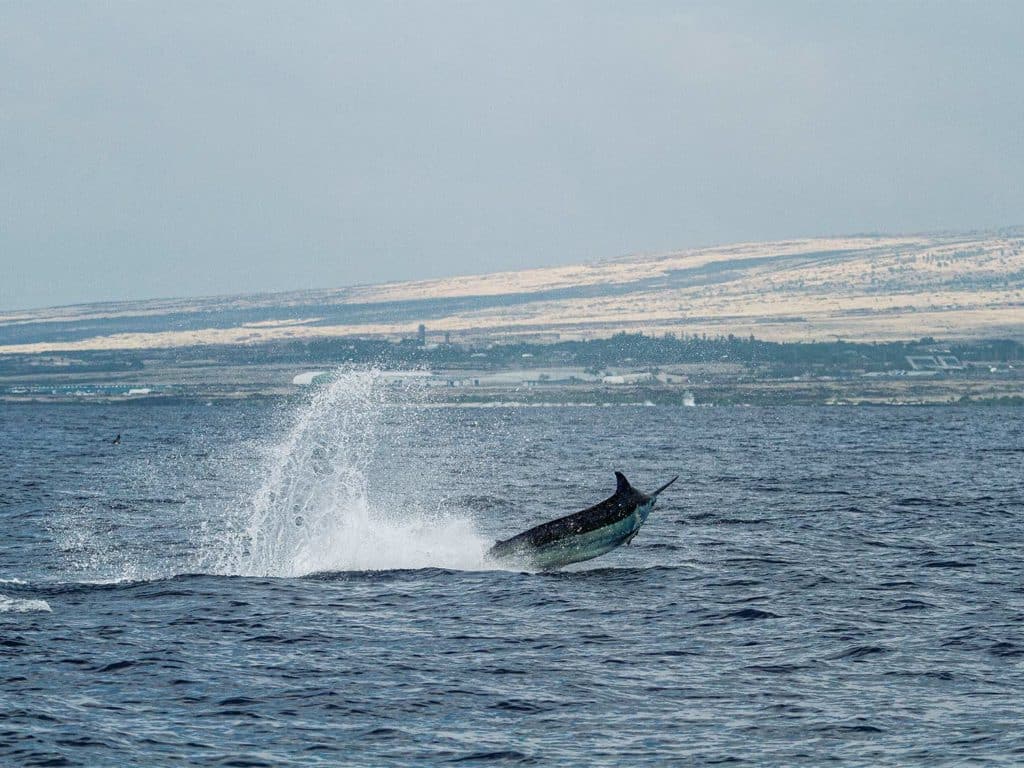
Finding the Perfect Name
Hawaiian hand-poured resin lures are as much an art as a science. Even today, each one is poured, cut and sanded by hand. Over the years, Yee has made hundreds of designs and has used thousands of shells, incorporating them in the inserts to give the heads a unique, reflective pattern. Even something as simple as changing the style of the eyes would change the look and movement of a lure. Doll’s eyes, beer-bottle caps, casino chips and others have been used in Yee lures, yet through it all, he has remained committed to staying true to his craft—designing lures that are appealing to both the fish and the fishermen.
“The variety is nearly endless, and it’s part of what makes each lure a small work of art, handcrafted for the single purpose of catching fish.”
The same philosophy applies to the names he’s given to each different head shape and style. The 501 and 505 were so named because of the first fish caught on each one (proving that these are both reliable big-marlin producers). An afternoon spent polishing lure heads while watching CNN broadcasts and round-the-clock news updates gave Yee’s 24/7 its name.
The variety is nearly endless, and it’s part of what makes each lure a small work of art, handcrafted for the single purpose of catching fish. They are as unique as snowflakes, with a consistency that is undeniable, as well as a special appeal that mass production simply cannot match; each lure carries the soul of the designer. Yee doesn’t know how many lures he’s produced in his career, but a wild guess would be in the tens of thousands over the course of the past 60 years.
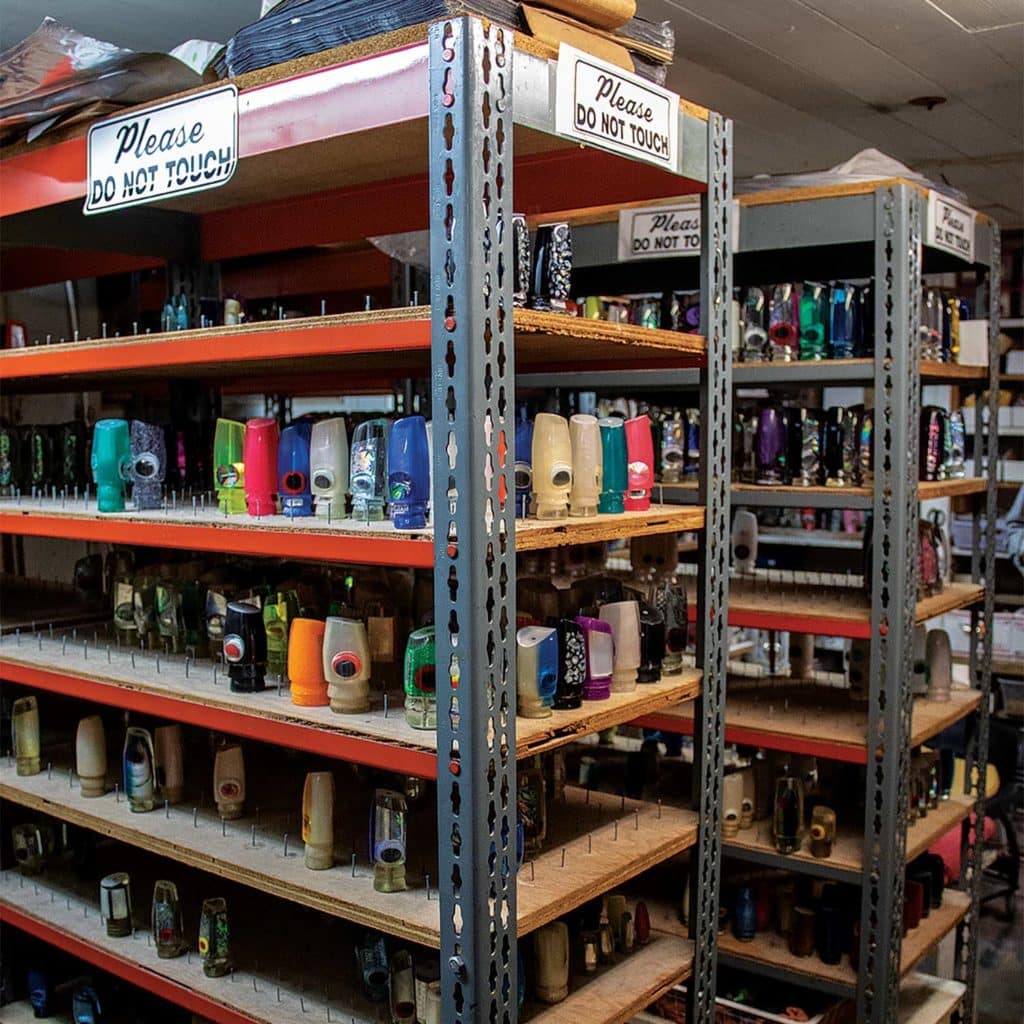
The Early Days
Hawaiian lure-fishing started with Capts. George Parker and Henry Chee in Kona. Their early designs were modified by George Lum and the father-and-son duo of Chester and David Kaita to give the lures more dig for the rougher waters off Honolulu, as opposed to Kona’s flat-calm sea conditions. The Kona plunger style evolved from their work.
Capt. Gene Vander Hoek is most often associated with the early plungers, which were evolutionary designs that combined the characteristics of both styles. Chester Kaita crafted the blue plunger that Capt. Bobby Brown used to set angler Jay DeBeaubien’s 130-pound-test world-record 1,376-pound Pacific blue marlin aboard No Problem.
Yee’s most famous lure, of course, is the Super Plunger. The story goes that Capt. Pete Hoogs went to Yee and asked for a bigger version of the plunger that Vander Hoek was using in those days. Most things are evolutionary, and that’s how it goes with lure-making as well. When Joe handed over the new design, Hoogs announced, “That’s not a plunger, Joe, that’s a super plunger!” Hoogs went on to hang the first 1,000-pound blue marlin on a Joe Yee lure, a Straight Runner. The late Jim Rizzuto, an acknowledged expert on Hawaiian fishing history—and marlin lures in particular—once reported that more grander blue marlin had been caught on a pearl Super Plunger than on any other lure in history.
There’s a story of a charter party that had been fishing for three days on a well-known local boat without much luck. On the afternoon of the third day, after drinking heavily since breakfast, one of the group members asked if he could put his Super Plunger in the clean water off the long corner. The captain grumbled to the tipsy angler that he could put the lure wherever he wanted, as long as he would get off the boat soon. After just a few minutes in the water, an 800-pound blue marlin ate the lure. The captain said the anglers still had to get the hell off the boat, but the lure needed to stay behind.
Their limited supply and high demand have driven up prices for Yee’s lures. Always difficult to acquire, a current glance online has some so-called rare designs selling for more than $500. But while they are works of art worthy of collecting solely for display, they are also designed to fish.
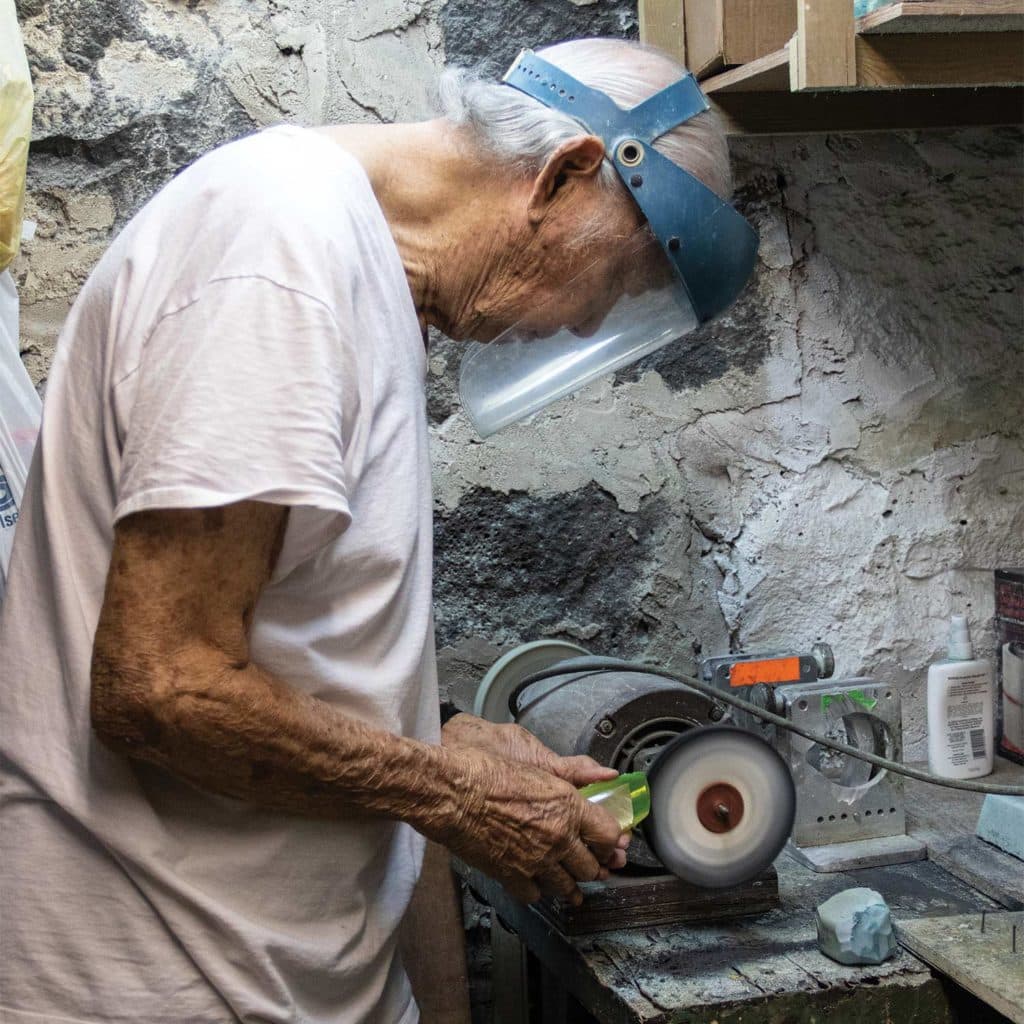
Collector Meets Designer
The fishing world is indeed a small microcosm of the real world. So when avid lure collector David Finkelstein had a chance to visit Yee in Honolulu, the two started talking about where they’d like to fish. Finkelstein’s Garlington, Miss Behavin, is home-ported in Costa Rica but can be found anywhere the fishing’s good in the Pacific, from Magdalena Bay to Cabo to Panama, so he extended an invitation for Yee to fish in Costa Rica. Yee said he would if Finkelstein would compete in the Hawaiian International Billfish Tournament in Kona later that year. The horse-trading continued: Finkelstein said he would do so on the condition that Yee give him a full spread of his lures for the event. The HIBT is a trophy-only tournament with the finest captains and crews on the famous Kona grounds. With a full Yee spread in the wake, the Miss Behavin team won the Top Release award in 2017.
A few months later, Yee and his grandson arrived in Los Sueños to join Finkelstein and me, along with the Miss Behavin crew, to spend some time in Central American waters. Each morning we put the lines in 25 to 30 miles from the dock, with Yee watching his lures popping and smoking in the wake, and Kegley and crew catching plenty of marlin on his creations. For the Costa Rican crew of Miss Behavin, it was a rare treat to hear from Yee about his experiences fishing in Hawaii, Tahiti, Australia and other hotspots around the world. As a special treat, he gave each of the captains and mates a pink pearl Super Plunger to treasure. Back at the dock, Yee ran into Capt. Bobby Brown; the old friends reacquainted and were soon telling stories of fish battles won and lost. Listening to these two legends discuss marlin lures was like hearing Sandy Koufax and Don Drysdale talk fastballs.
Read Next: Learn to rig your marlin lures correctly.
The Workshop
Back in Yee’s Honolulu home, the shelves are full of fishing photos and memorabilia from the past five decades of his life on the water. Of the catches produced by his lures, one that stands out is the 50-pound-test world record landed by Ray Hawkes in the 1993 HIBT Pro-Am tournament aboard Sea Strike: a blue marlin weighing 1,166 pounds, a record that still stands today. The mount of that fish resides in the lobby of the King Kamehameha Kona Beach Hotel. Yee’s workshop is full of designs and prototypes, as well as plenty of additional memories of past catches, good friends and big fish. And there are many more records to be caught and more angling memories made by this 92-year-old living legend.
Over the years, many have come along with offers to mass-produce Joe Yee lures, each one promising buckets of cash. And each time, Yee politely turns down the offers to sell, preferring instead to continue the time-honored tradition of handcrafting hard-resin lures that outperform and flat out-fish just about anything else on the water. That’s the Joe Yee way.
